Established 2002
Lucinda Shepherd, friend Robert Randell and various experts for their support.
What are Fossil Fuels?
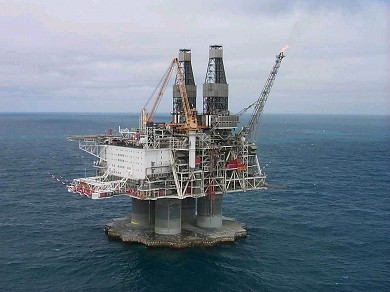
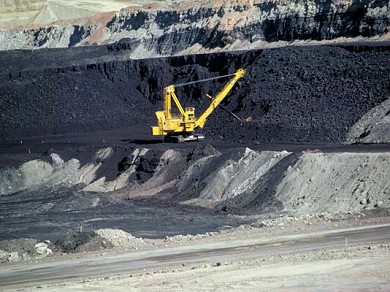
Left: An oil rig - pumps oil from deep underground. Right: A coal mine - large quarry diggers carve out the resource.
What is a fossil fuel?
Fossil fuels are hydrocarbons such as coal, oil and natural gas, sourced from the organic remains of prehistoric organisms.


From left: a lump of coal, liquid
petroleum and a gas flame.
When these fuels are burnt, the energy released can be harnessed to produce electricity, power vehicles, heat homes, cook food and much more. They are also used in the production of important materials such as plastics.
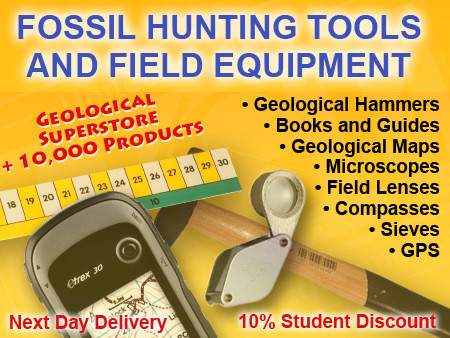

ADVERTISEMENT BY UKGE - OFFICIAL ADVERTISING PARTNER OF DISCOVERING FOSSILS
How do fossil fuels form?
In order to answer this question, we must first distinguish oil and gas from coal. Generally speaking, oil and gas are formed from the organic remains of marine organisms which become entrained within sea-floor sediments. Coal, by contrast, is typically formed in non-marine settings from the remains of land vegetation.
Oil and gas formation begins with the accumulation of organics on the sea-floor; these are the dead remains of organisms living in the water column, such as microscopic plankton, which rain down on the sea floor below. This will only occur in rather unusual settings, where the sea floor is stagnant such that there is no oxygen present to break the organic remains down and no sea-floor dwelling organisms present that might feed on the organics. A high sediment accumulation rate of may also help to bury the organics before the action of decay can break them down. As the sediment pile becomes deeper the organics within it are subjected to heat and pressure which leads to formation of oil and then gas. For oil and gas extraction, it is important that the source rock is not 'over-cooked' or the hydrocarbons will be destroyed. There must be suitable reservoir-rock, such as a porous sandstone, into which the hydrocarbons can migrate and accumulate. This must be overlain by an impervious cap-rock, such as a clay, which prevents the hydrocarbons from escaping to the surface. Finally, the geometry of the reservoir and cap-rock bodies must be such that the hydrocarbons become trapped; usually folding will suffice.

Diagram
explaining the generation and entrapment of oil and gas.

Fossil ferns within a sheet of coal.
Coal typically forms on land from vegetation in lowland, swampy, mire environments. Stagnant waterlogged soil prevents the accumulated plant debris from breaking down. The recognisable remains of plants are often visible within coals and associated shales, confirming their plant-origin. The picture above shows a piece of coal containing a network of fossilised fern leaves - clear evidence that it was formed from vegetable remains.

More recent peat deposits.
The accumulated plant debris initially forms a material known as peat. The geological processes of burial beneath later sediment and alteration by heat and pressure convert the peat to coal; a process known as coalification.
For the peat to become coal, it must be buried by sediment. Burial compacts the peat and, consequently, much water is squeezed out during the first stages of burial. Continued burial and the addition of heat and time cause the complex hydrocarbon compounds in the peat to break down and alter in a variety of ways. The gaseous alteration products (methane is one) are typically expelled from the deposit, and the deposit becomes more and more carbon-rich as the other elements disperse. The stages of this trend proceed from plant debris through peat, lignite, sub-bituminous coal, bituminous coal, anthracite coal to graphite (a pure carbon mineral). Source: www.uky.edu.
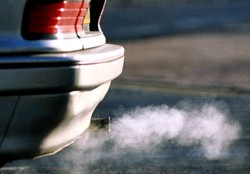
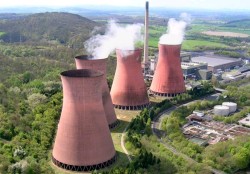

From left: Oil is refined to produce
petrol and diesel, power stations burn fuel to produce energy, gas
is used for everyday cooking.
Fossil fuels are burnt to release energy in the form of heat. This energy can be used to power cars, produce electricity, heat homes, cook food to name but a few.
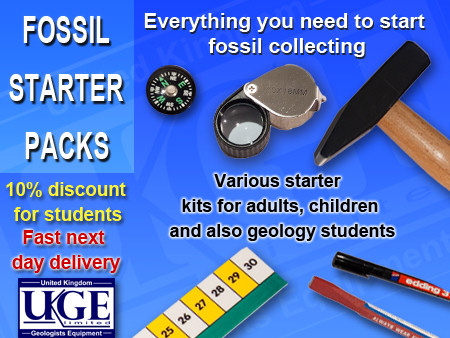

ADVERTISEMENT BY UKGE - OFFICIAL ADVERTISING PARTNER OF DISCOVERING
FOSSILS
What are the advantages of fossil fuels?
Straightforward combustion process
Relatively inexpensive
Easily transported
What are the disadvantages of fossil fuels?
Thought to be a major cause of global warming
Cause of acid rain
Not sustainable in the long-term
Politics and Economics can cause major price increases
Extraction can be very damaging to the landscape
Will fossil fuels run out?
Fossil fuels are essentially a non-renewable energy source. The geological processes which create them take millions of years, so they cannot be replaced within human timescales once they have gone. It is impossible to estimate when fossil fuels will disappear, but within the next 100 years it is widely believed that the cost of finding and extracting new deposits will render them too expensive for everyday use.
What are the alternative renewable energy sources?



From left: Wind turbines generate
electricity, solar panels convert sunlight into electricity, geothermal
plant utilise underground heat.
Renewable energy sources can provide comparable energy production and heating. At present some technologies are cost inhibitive, but the rate of technological development is making them more affordable with time. Other examples of renewable energy sources include: water powered turbines, tidal generators, nuclear, compost and rape seed oil.
Join us on a fossil hunt


Left: A birthday party with
a twist - fossil hunting at
Peacehaven.
Right: A family hold their prized ammonite at Beachy Head.
Discovering Fossils guided fossil hunts reveal evidence of life that existed millions of years ago. Whether it's your first time fossil hunting or you're looking to expand your subject knowledge, our fossil hunts provide an enjoyable and educational experience for all. To find out more CLICK HERE




